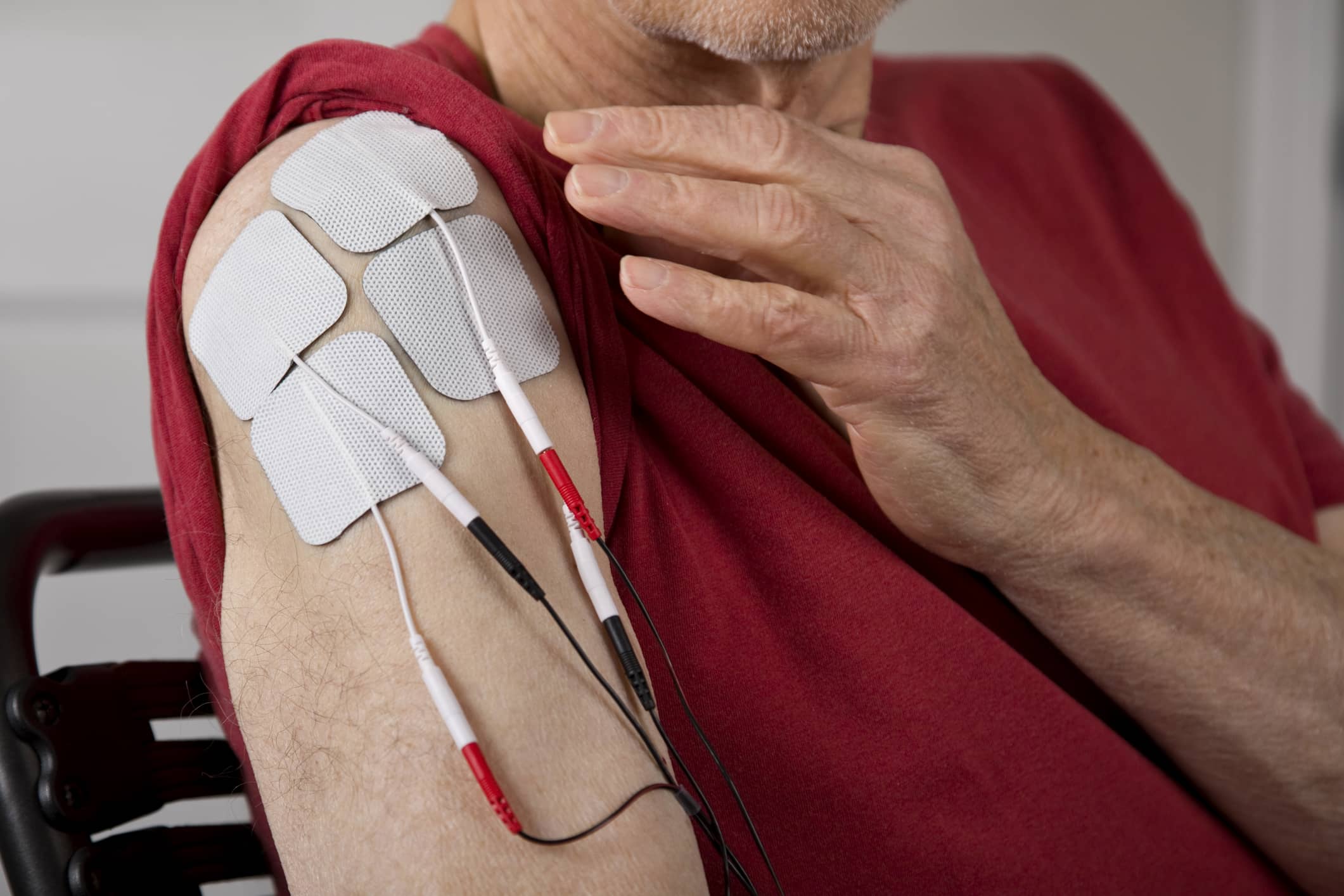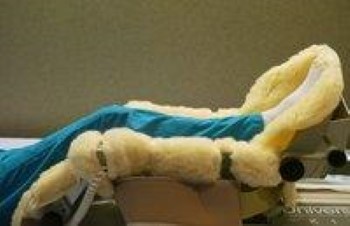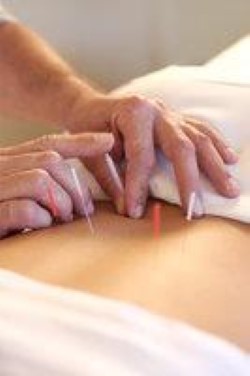Recovery
Alternative Methods To Help Manage Pain After Orthopaedic Surgery
After orthopaedic surgery, your doctors will make every effort to control your recovery pain. While you should expect to feel some discomfort, advancements in pain control now make it easier for your doctor to manage and relieve pain.
While you should expect to feel some discomfort, moderate and severe pain can actually limit your recovery. Fortunately, there are safe and effective options available to you when you need pain relief:
- Medications
- Non-medication options (see below)
To manage your pain after orthopaedic surgery, your surgeon will consider several factors that are unique to you, your surgery, and your overall health. That is why it is important to openly discuss your fears and expectations, as well as your past experiences with pain control, with your surgeon.
Surgeons and their patients are increasingly using alternative methods to supplement conventional medicine. This article highlights some of the common alternative (non-medication) approaches your doctor may recommend for pain management:
- Transcutaneous electrical nerve stimulation (TENS)
- Continuous passive motion
- Acupuncture
- Brain-body psychological methods
Many more alternative methods exist than are featured in this article. Orthopaedic surgeons are leaders in research to discover newer, safer, more effective non-medication pain management methods.
Transcutaneous Electrical Nerve Stimulation (TENS)
Transcutaneous electrical nerve stimulation (TENS) uses a special device to transmit low-level electrical charges through the skin into the area of the body that is experiencing pain.
A TENS system consists of a small, battery-powered machine connected by wires to a pair of electrodes. The two electrodes are connected to your skin near the source of pain or at a pressure point. A low-level electrical current travels through your skin and along your nerve fibers, which may cause a warm, tingling sensation. A typical TENS session lasts anywhere from 5 to 15 minutes.
Many studies have found that TENS is useful in easing:
- Pain after surgery
- Pain related to injuries, such as fractures and sprain
- Some chronic pain conditions, particularly low back pain
TENS is generally considered safe. However, its routine (regular) use is not recommended.
There is also an acupuncture version of TENS in which the electrical impulses are sent through acupuncture needles instead of electrode pads. This form of TENS is called "electro-acupuncture," or percutaneous electrical nerve stimulation (PENS).
How TENS Works
There are several ways TENS is thought to relieve pain:
Gate Control Theory. For you to feel pain, the sensation must travel through a "gate" to get to the brain. Normally, the pain is able to flow freely through the gate because it (pain) is the only sensation trying to get through. However, if the gate becomes flooded with another type of sensation (in this case, an electric current), the gate will reach capacity and no longer have room for the underlying pain sensation to get through.
Release of Endogenous Opiates. Some scientists believe that TENS works by forcing certain nerve cells to release more of the body's natural pain killers, called "endorphins." This causes you to feel less pain.
Central Inhibitory Effect. TENS may also work by changing the way your brain perceives (senses) pain.
When To Avoid TENS
TENS might not work as well if your pain is caused by mental or emotional problems. It also does not work as well if you suffer from drug addiction.
TENS should not be used if you have any of the following conditions:
- Implanted medical device (defibrillator or pacemaker)
- Pregnancy
- Epilepsy
- Intellectual disability
- Undiagnosed pain
Continuous Passive Motion (CPM)
Continuous passive motion (CPM) is a technique in which your joint is moved constantly in a mechanical splint to prevent stiffness and increase range of motion. A CPM machine moves your joint for you without requiring you to exert any effort.
- When a machine or another person moves the joint for you, it is called passive movement.
- Active movement is when you move the joint on your own.
Medical evidence indicates that in some cases, immobilization (not moving at all) increases pain after surgery. As a result, early motion has been applied to many orthopaedic problems. CPM is thought to be effective in the rehabilitation treatment of:
- Cartilage damage
- A bacterial infection inside a joint
- A fracture around a joint after it has been fixed with internal devices (screws, pins, etc.)
CPM is believed to:
- Enhance the nutrition of your joint
- Discourage the formation of scar tissue
- Prevent the abnormal shortening of the muscles surrounding your joints
If you can already move — actively or passively — without CPM, using the device will not be beneficial. CPM is not a substitute for working with an experienced physical therapist who is trained to provide both active and passive motion exercises. If your doctor recommends CPM, you will also be monitored by a physical therapist.
When recommended by your surgeon, the most important time to use a CPM device seems to be in the first 2 to 7 days after surgery, for about 4 to 6 hours every day.
Initially, CPM was used only in hospitals or outpatient physical therapy clinics, but today, CPM units can be purchased for use at home. While not always necessary for a satisfactory outcome, many patients find benefit in using a CPM machine during their recovery.
Acupuncture
When acupuncture is combined with traditional pain relief methods, it may be helpful for some types of chronic pain:
- Low back pain
- Osteoarthritis
- Fibromyalgia
- Aching muscle pain (knots)
- Lateral epicondylitis (tennis elbow)
- Carpal tunnel syndrome
Acupuncture may also be helpful during stroke rehabilitation.
Acupuncture points tend to be areas of your skin that contain a lot of criss-crossing nerve endings that feed into your muscles or bones. Some scientists believe that these "acupoints" have special electrical characteristics that can be manipulated using painless hair-thin needles.
A typical acupuncture procedure lasts about 30 minutes. Treatments are used to relieve local pain and swelling, as well as to provide a more general feeling of relaxation due to the release of your body's natural painkillers, called endorphins.
Because each acupoint is responsible for producing effects in different areas of the body, it is important to be clear with your provider about the where your pain is located and how much it hurts. The acupuncturist can then target the correct acupoint.
Psychological Methods
Psychological methods can be effective as an additional treatment for pain control. These methods can reduce or eliminate the need for medication. Some of the oldest and best documented psychological methods include:
- Relaxation techniques
- Guided imagery
- Medical hypnosis
In 18 medical research studies, medical hypnosis, guided imagery, or relaxation techniques were used to improve recovery after surgery. In 16 of the studies (4 were orthopaedic surgeries), researchers documented improvements in both the physical and emotional recoveries of the patients.
These results demonstrated that psychological methods are effective as an additional treatment for pain management, postsurgical recovery (physical and emotional), and orthopaedic rehabilitation.
These methods appear to have potential in orthopaedic surgery that could reduce pain, enhance treatment outcomes, and contain or even reduce medical costs.
The American Academy of Orthopaedic Surgeons (AAOS) continues to conduct research that creates guidelines to help surgeons and patients manage pain after orthopaedic surgery. These are recommendations only and may not apply to every case or to you. For more information: Pain Alleviation | American Academy of Orthopaedic Surgeons (aaos.org)
Contributed and/or Updated by
Peer-Reviewed by
AAOS does not endorse any treatments, procedures, products, or physicians referenced herein. This information is provided as an educational service and is not intended to serve as medical advice. Anyone seeking specific orthopaedic advice or assistance should consult his or her orthopaedic surgeon, or locate one in your area through the AAOS Find an Orthopaedist program on this website.









